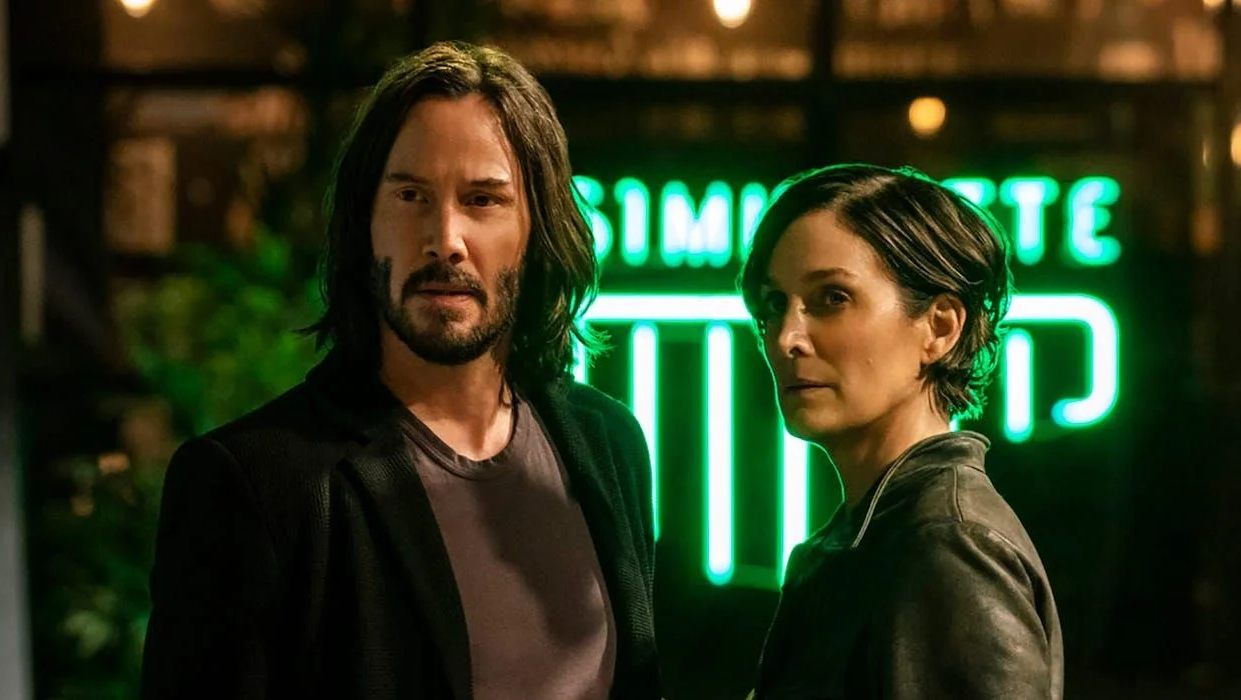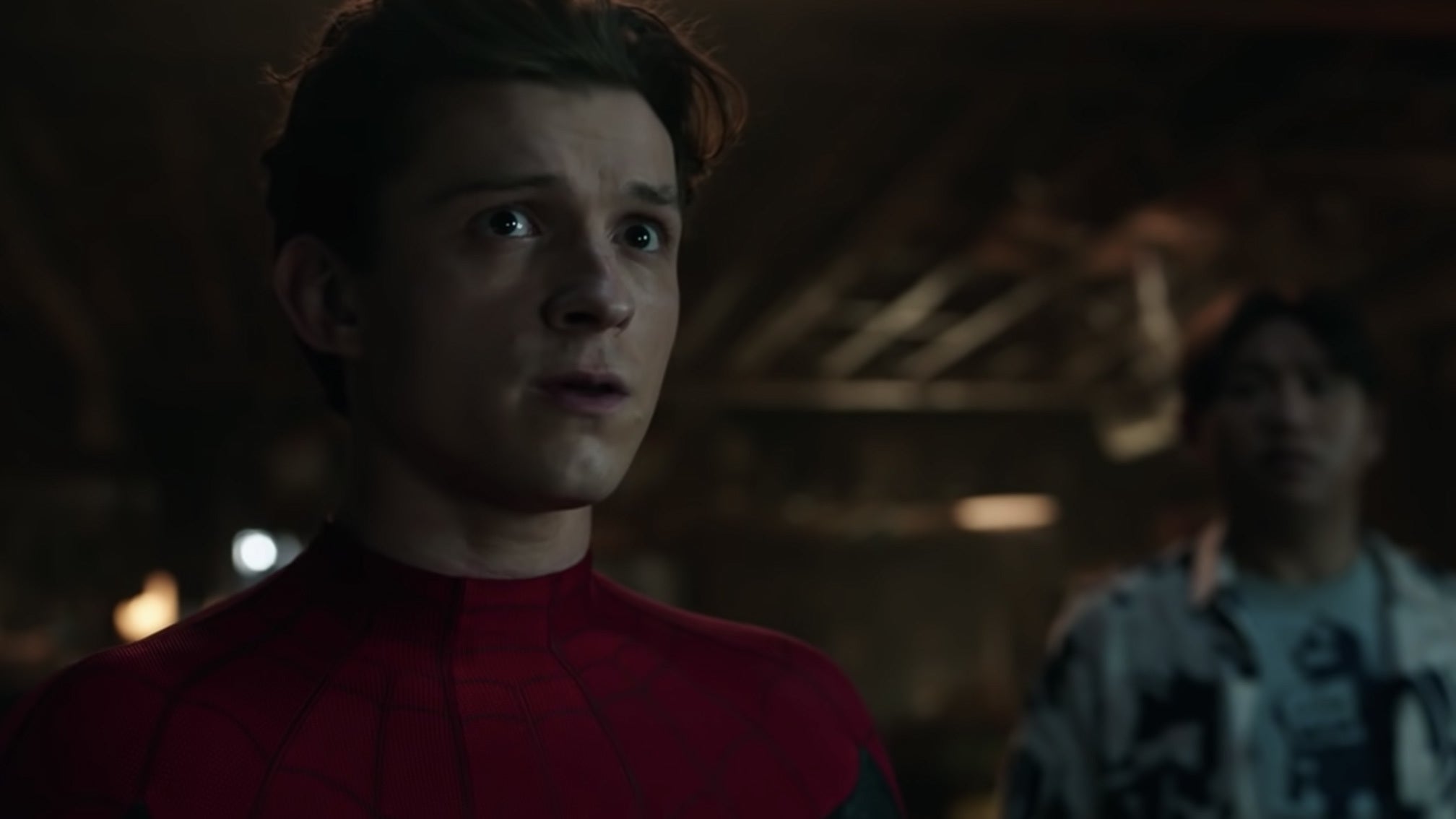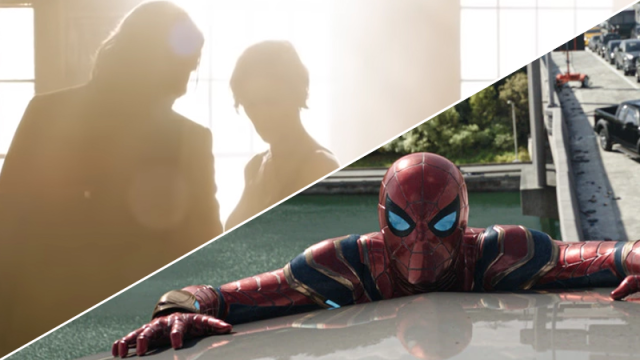“Nothing comforts anxiety like a little nostalgia,” the new Morpheus tells Neo in The Matrix Resurrections. In a blockbuster space addled with reliving the days of the franchise’s past, seeing it cut into the film’s trailers can almost come across as biting — a knowing tut at an emotional panacea. But Resurrections’ relationship with the past isn’t just smarter than that, but a fascinating tie that connects it to the other big blockbuster it’s sharing screening space with.

On the surface, perhaps cynically so, the ways both Spider-Man: No Way Home and Resurrections engage with their own cinematic legacies might seem as far away from each other as they could possibly be. Resurrections is fascinated with letting you know that it is engaged with the very idea that it is a fourth Matrix movie coming so long after the original three. That state of questioning its relationship is at Resurrections’ core, from the meta-text alt reality Keanu Reeves’ Thomas Anderson/Neo finds himself in at the start of the film — a game developer looking to make a new Matrix game in the franchise, while his colleagues all bandy about what they think is the idea that defined the Wachowskis’ trilogy in the first place — to its literal editing in of flashes of those movies throughout, constantly reminding you just when and how it is riffing on the Matrix stories that came before it. No Way Home, on the other hand, treats the Spider-Man films that came before it as chances to tie disparate sagas into a loosely conceived whole, a celebration that the thing you currently like — Tom Holland’s rebooted Spider-Man — can literally co-exist alongside the Spiders-Man you liked when you were younger, like toys mashed together with a childlike glee. If Resurrections’ approach to what came before is intellectual, then No Way Home’s might be considered to be largely spectacle: the visual delight in putting Andrew Garfield, Tobey Maguire, and Tom Holland together on screen.

But that would belie the fact that really, both Resurrections and No Way Home exist in conversation with their past selves in surprisingly similar ways. Both are, at their core, stories about how the past is not sequestered off from the present to be rebooted and retold and relitigated, but how the lessons learned from it can inform their respective stories’ futures. In Resurrections’ case, this is somewhat easier to grasp: after all, it makes no qualms about the fact that this is a continuation of a story director Lana Wachowski and her sister, Lily, told at the turn of the century — that it is, in ways literal and critical, impossible to extricate this new entry from the films that came before it. No Way Home has to do this in spite of being sequestered from that past, as Spider-Man’s cinema history is one of multiple reboots and retellings already, but in parlaying the Marvel Cinematic Universe’s current fascination with parallel realities, manages to patch together a through line across three different iterations of the Spider-Man mythos.
Neo and Trinity — and their pre-awakened selves as Thomas and Tiffany — both as characters and avatars for Wachowski’s blunt-force dialogue about what it means to be in a new Matrix movie in 2021, are confronted with the realisation of what they went through in the past, and how that impacts them in the here and now as people that have grown and changed in the years since. In doing so, they’re given the choice to acknowledge its existence or deny reality itself — and when they do embrace that past, they’re given a chance to have what they’ve always really wanted: a loving relationship with each other. But they’re not the only characters that have to reckon with accepting the past as they move ahead; there’s also Jessica Henwick’s Bugs, whose deification of Neo’s history as the One puts her at odds with her commanders in the remnants of humankind that lived on in the wake of Neo’s uneasy ceasefire with the machines, even as the lines between what was once Man vs Machine blur. The returning elderly General Niobe, now the head of a new city state in Io and fearing that Neo’s desire to re-liberate Trinity from the Matrix will put the newfound peace she’s safeguarded for humans and rebel synthetics alike, likewise has to let go of the past she fears repeating to believe in taking a risk for the future of all under her protection.

Over in No Way Home, Tom Holland’s Peter Parker is the one that is burdened the most with engaging in this kind of nostalgic reflection as, unlike Neo and Trinity, he has to deal with the fact that it is not really his own past that is being confronted. Visited by his alternate selves as he grieves for the death of his Aunt May, Peter is asked to consider the other Peters’ own growth beyond the traumas of their pasts as Spider-Man, and how in good ways and bad it has shaped them as they are in this present. Drawing the throughline of moving on from a great pain that defined those Peter’s pasts, our Peter is given the catalyst for him to lay down the path for his own future — sacrificing the present he had to have a clean slate that will allow him and him alone to define who he is, both as a person and as Spider-Man, after years of being muddled in the legacies that overshadowed him. The meta-textual knowledge that Holland’s Peter Parker is our third cinematic interpretation of him becomes baked into the text as a leaping point for wherever his next adventure takes him — and even if we don’t know just what shape that will take, there’s a hope and potential now there in this clean slate that was only made possible in how No Way Home engaged with its own sense of the past.
Both Resurrections and No Way Home’s dovetailed reckonings with their respective movie histories are an interesting endpoint for 2021 in pop culture to have, as we feel like we’re ever continuously barreling toward a mainstream cinematic future of studio franchises ceaselessly rebooting and retelling themselves to maintain a capitalistic grip on culture. While being a part of that machine, their mirrored, yet differing approaches to engaging with that idea on an artistic level — and offering up the thought that something new and exciting can come from our current drive to constantly live in our cultural past — in turn give hope that maybe there is space for our big blockbuster films to have something to say about their own wider legacies.
Wondering where our RSS feed went? You can pick the new up one here.
